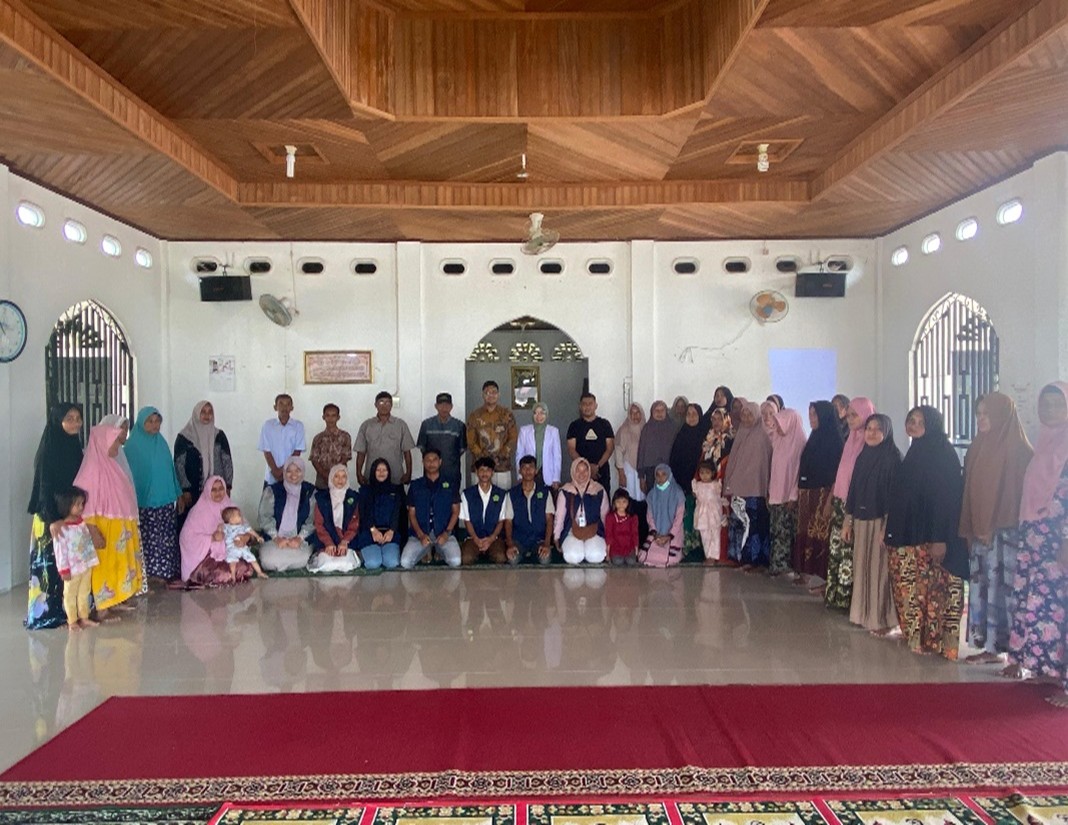Education on Risk Factors of Cerebrovascular Disease among the Community of Kuwue Village, Montasik Subdistrict, Aceh Besar
Main Article Content
Nanda Desreza*
Rizkidawati
Annisa Putri
Winda Artika Syafitri
Cerebrovascular disease is a condition in which rapidly developing clinical signs in the form of focal and global neurological disorders appear. These signs can worsen and persist for more than 24 hours and can cause death. The aim of this activity is to increase public understanding of how to prevent this disease and reduce its complications. The venue for this event is Kuwue Montasik village in Aceh Besar. The Kuwue village community, consisting of 18 people, attended in person. This community service method was implemented through training and discussion. The activity began on 20 August 2025 at 10:00 a.m. and lasted until completion. Starting with participant data, the activity continued with a presentation of the objectives and material on the risk factors for this disease, better known as stroke, its triggers, and its complications. The activity showed that the community understood low-fibre diets, low physical activity, smoking, and excessive salt use in cooking. It was recommended that the community improve their lifestyle, diet, and rest patterns, and families should continue to provide strong motivation to family members who are vulnerable to danger. In addition, the responsibility of health workers to provide consistent education should be increased.
Bakraa, R., Aldhaheri, R., Barashid, M., Benafeef, S., Alzahrani, M., Bajaba, R., Alshehri, S., & Alshibani, M. (2021). Stroke risk factor awareness among populations in Saudi Arabia. International Journal of General Medicine, 4177–4182.
Boehme, A. K., Esenwa, C., & Elkind, M. S. V. (2017). Stroke risk factors, genetics, and prevention. Circulation Research, 120(3), 472–495.
Fu, Y., Liu, Q., Anrather, J., & Shi, F.-D. (2015). Immune interventions in stroke. Nature Reviews Neurology, 11(9), 524–535.
Hendra, P., Setiawan, C. H., Virginia, D. M., & Julianus, J. (2022). Keberhasilan Terapi Pada Pasien Risiko Kardiovaskular. Sanata Dharma University Press.
Imanda, A., Martini, S., & Artanti, K. D. (2019). Post hypertension and stroke: A case control study. Kesmas: National Public Health Journal, 13(4).
Inchai, P., Tsai, W.-C., Chiu, L.-T., & Kung, P.-T. (2021). Incidence, risk, and associated risk factors of stroke among people with different disability types and severities: A national population-based cohort study in Taiwan. Disability and Health Journal, 14(4), 101165.
Iskandar, M., & Rumahorbo, H. (2018). The effectiveness of discharge planning and range of motion (ROM) training in increasing muscle strength of nonhemorrhagic stroke patients. GHMJ (Global Health Management Journal), 2(3), 57–62.
Lavados, P. M., Hoffmeister, L., Moraga, A. M., Vejar, A., Vidal, C., Gajardo, C., Portales, B., San Martín, D., Lopez, E., & Rojo, A. (2021). Incidence, risk factors, prognosis, and health-related quality of life after stroke in a low-resource community in Chile (ÑANDU): a prospective population-based study. The Lancet Global Health, 9(3), e340–e351.
Sanyasi, R. D. L. R., & Pinzon, R. T. (2018). A3330 Prevalence of antiplatelet resistance in ischemic stroke patients: Is hypertension contribute to antiplatelet resistance? Journal of Hypertension, 36, e289.
Saputra, A. U., & Mardiono, S. (2022). Edukasi Kesehatan Tentang Perawatan Lansia Dengan Kejadian Stroke Di Rumah. Indonesian Journal Of Community Service, 2(2), 188–193.
Temorubun, B., & Pusp?ta Sar? Patalle, I. (2022). Faktor Risiko Kejadian Stroke Berulang di Rumah Sakit Stella Maris Makassar. STIK Stella Maris Makassar.
Wayunah, W., & Saefulloh, M. (2017). Analisis faktor yang berhubungan dengan kejadian stroke di rsud indramayu. Jurnal Pendidikan Keperawatan Indonesia, 2(2), 65–76.
















